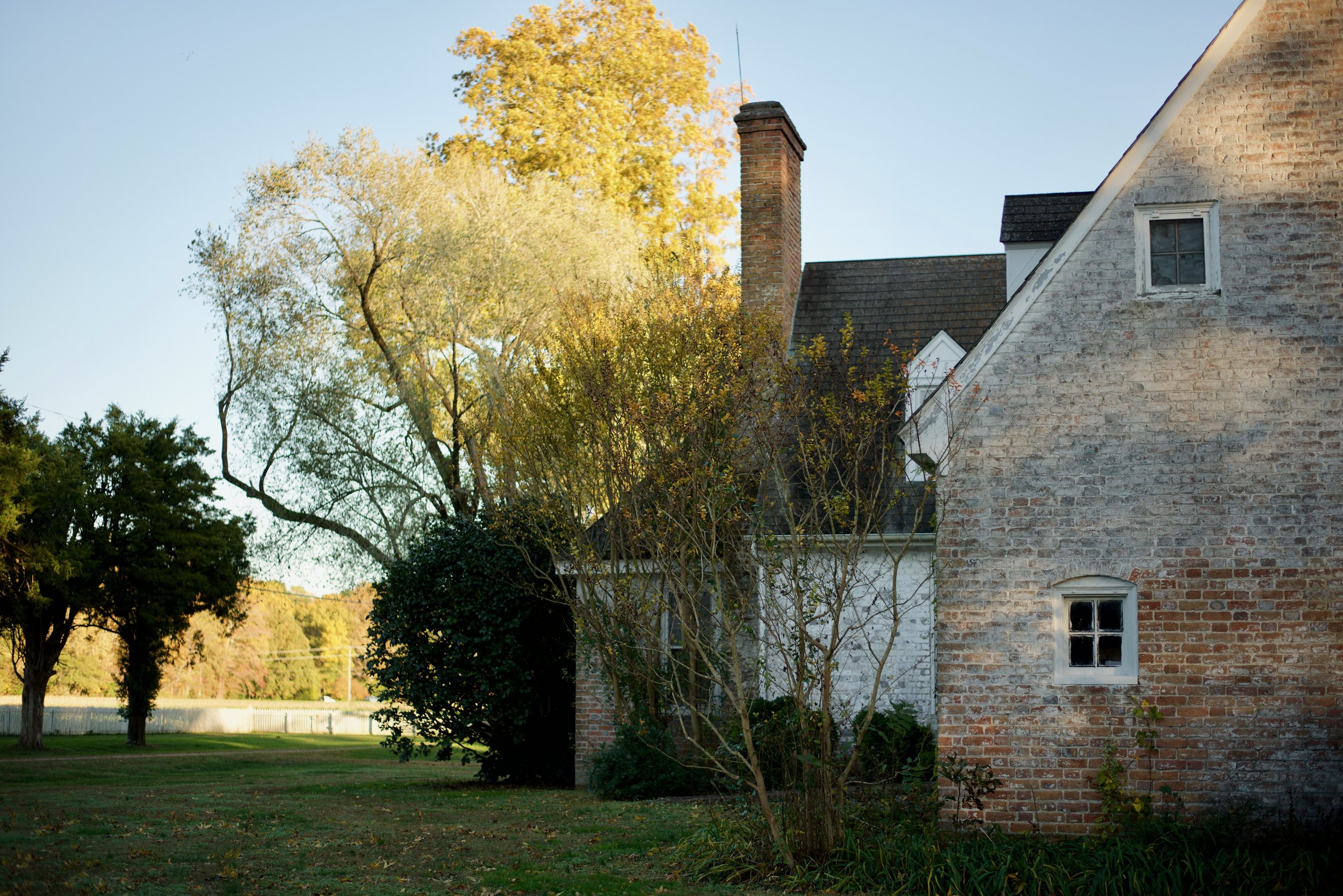
The Glebehouse
A “Glebehouse” is, of course, a house on a glebe. Glebes were traditionally farmed to generate income to support the clergy of a parish but often the clergy lived on the glebe as well, making a “Glebehouse” specifically refer to a parsonage located on a glebe! The Glebehouse of St. James On-the-Glebe is the historic Abingdon Glebehouse. It was this house that was mentioned by the Rev’d Thomas Hughes in 1724 to the Bishop of London. There is speculation that the house might even have been constructed in the 1600s, but it is generally believed to be dated from 1720.
Constructed using the Flemish Bond style of bricklaying with Gabled roofs, it is an incredible example of the early transition to colonial Georgian architecture. The house is “T” shaped with the oldest parts of the house being the short upper side bars of the “T” which are now the larder and family chapel off of the living room. The gable “hipped roofs” of the Glebehouse are one of the earliest example of this form of roofing. This style of roof makes the Glebehouse almost seem small from the front view, with the entire second story peeking out from among the roof. The ceilings of the first floor are a towering twelve feet high, while the second story features pitched roofs, lower ceilings, and dormer windows throughout. The rear and side view of the house help you to better understand the scale.
The Glebehouse has three fireplaces: one in the dining room, one in the living room, and one in the library (functioning currently as the parish office). The fireplace in the living room has a beautiful depiction of harlequin players in delft tile. Each of the three upstairs bedrooms are located above a fireplace, where the bed would traditionally have been placed against the chimney for warmth.
The house itself predates the use of electric light and is traditionally “sighted.” This means that the orientation of the house was purposeful in relation to the sun and how the light shone on to the land itself. Light comes pouring into the kitchen early in the morning as soon as the sun rises and continues throughout the day. But only the sunset brings light into the living room, which would have been used only after the days work had been done and lit by a fire in the evening.
We were recently told by a descendent of previous owners of the Glebehouse that it is local legend that George Washington’s father stayed the night in the house as a guest back when one of the colonial rectors lived in it! It would have been common at that time for Glebehouses to be used as “inns” for distinguished travelers.
In the Disestablishment of 1802, the glebe property was seized and sold off. The Glebe and Glebehouse were bought and sold to a few different local Gloucester families. By 1954, the house was in a bad condition but was lovingly and extensively renovated. A kitchen was added for the first time (since the house was built in the colonial period, fire was a great concern and all cooking would have been done away from the main house,) Though much was in disrepair, it seems that the original flooring was retained in part of the house. A door leading from the library and the woodwork of the window in the library are thought to be original as well and pictured below.
Since St. James On-the-Glebe was bequeathed the property after the death of William Riddick, every effort has been made to restore the Glebehouse to what would have been its original style. The colors chosen for the walls, trim, and cabinet are all historically accurate local colors. They also are featured in our crest! The tone of white in the St. James On-the-Glebe crest is called “Harwood Putty” and refers to the color of lime wash (whitewash) made by the local colonial brickmaker Humphrey Harwood. The lime was dug from the banks of the York River (just a few miles from the Glebe) and then used to make paint to whitewash the barns. This exact color is used in the Glebehouse kitchen. To further the incredible local connection, the gentleman who farms our fields is a direct relation to the brickmaker Humphrey Harwood!
The Abingdon Glebehouse was named a Virginia Historic Landmark in 1970.
The Glebehouse is now back to its original purpose for the first time in over 200 years! It once again serves as a Parsonage for the Vicar and his family. In 2024, we will celebrate the 300 year anniversary of the first mention of the Glebehouse! We look forward to building a legacy on the Glebe that sees it being used as a real Glebehouse Parsonage for the next 300 years.


















